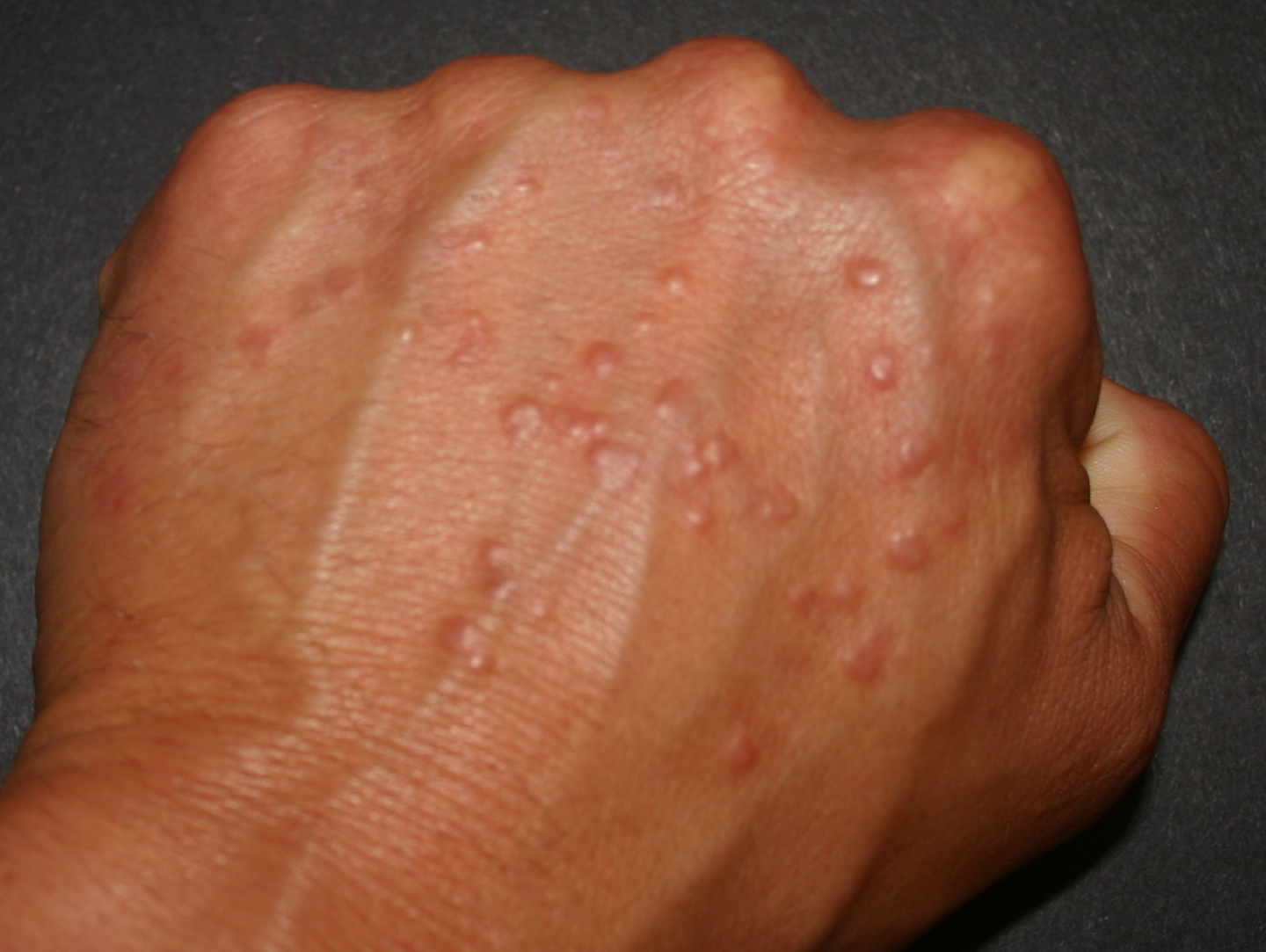- Granuloma annulare
Infobox_Disease
Name = PAGENAME

Caption = Granuloma annulare on hand
DiseasesDB = 5414
ICD10 = ICD10|L|92|0|l|80
ICD9 = ICD9|695.89
ICDO =
OMIM =
MedlinePlus =
eMedicineSubj = derm
eMedicineTopic = 169
MeshID = D016460Granuloma annulare is a chronic
skin disease consisting of a rash with reddish bumps arranged in a circle or ring. Granuloma annulare is different fromwarts , andcryotherapy treatment will not work. It most often affects children, young and older adults and it is slightly more common in females (60/40 ratio).Causes
The condition is usually seen in otherwise healthy people. Occasionally, it may be associated with
diabetes or thyroid disease.Its cause is unknown.cite web |url=http://www.mayoclinic.com/health/granuloma-annulare/DS00793/DSECTION=causes |title=Granuloma annulare: Causes - MayoClinic.com |format= |work= |accessdate=]
Presentation
Granuloma annulare is usually asymptomatic, but the rash may burn and be itchy. Patients usually notice a ring of small, firm bumps (papules) over the backs of the forearms, hands or feet, often centered around joints or knuckles. The bumps are caused by the clustering of
T cell s below the skin. Occasionally, multiple rings may be found. Rarely, granuloma annulare may appear as a firm nodule under the skin of the arms or legs.Prognosis
Because granuloma annulare is usually asymptomatic, treatment may not be necessary except for cosmetic reasons.cite web |url=http://www.aafp.org/afp/20061115/1729.html |title=Diagnosis and Management of Granuloma Annulare - November 15, 2006 -- American Family Physician |format= |work= |accessdate=] Most lesions of granuloma annulare disappear in pre-pubertal patients with no treatment within two years while older patients (50+) have rings for upwards of 20 years. The appearance of new rings years later is not uncommon.
See also
*
Granuloma References
External links
*
Wikimedia Foundation. 2010.
